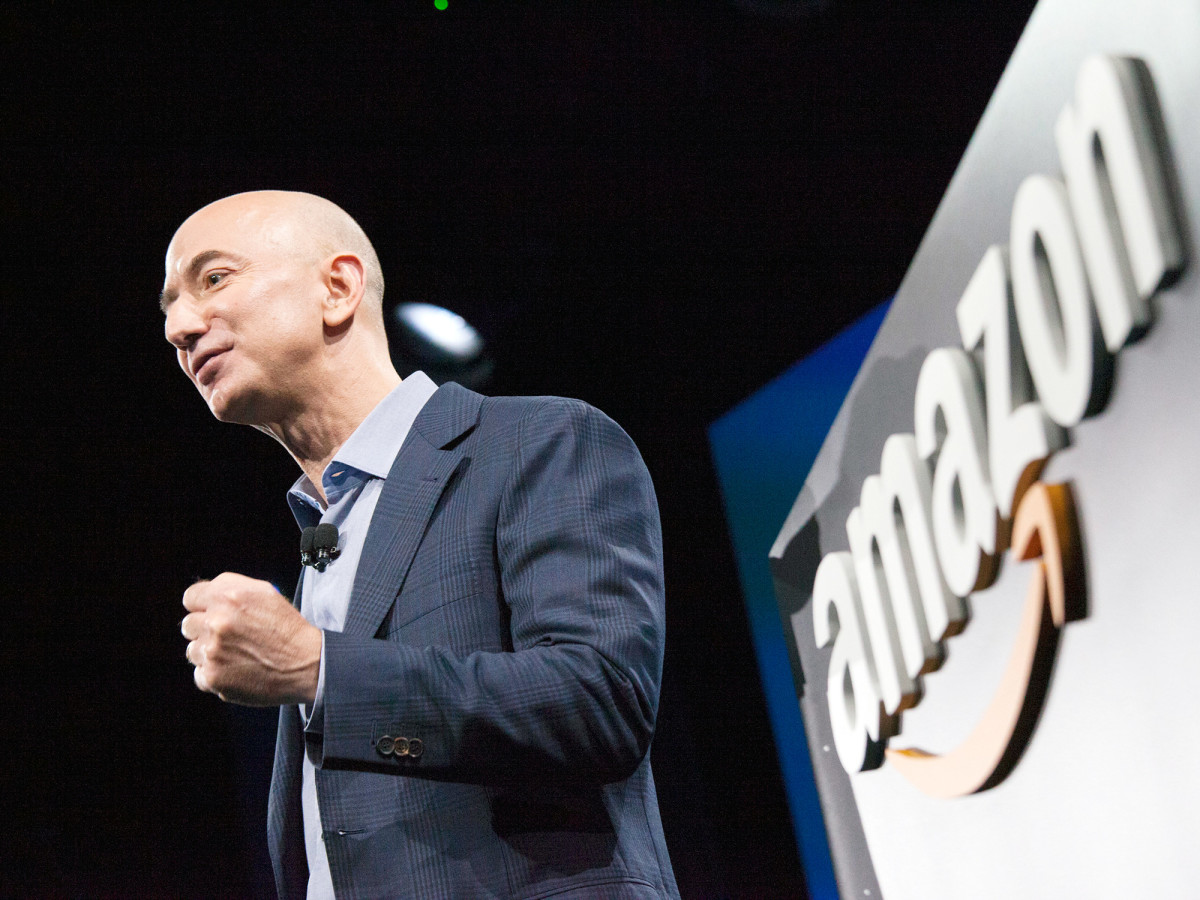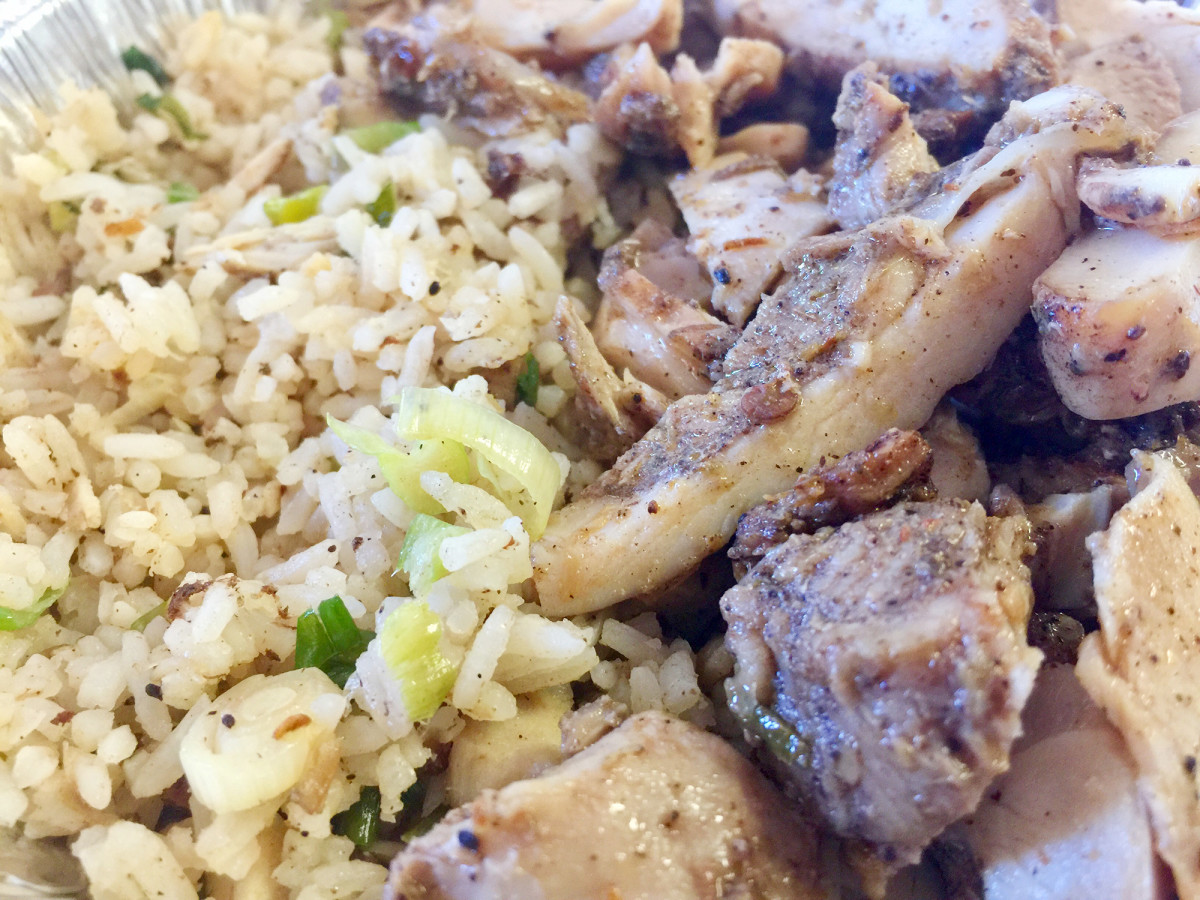With upheaval in cable market, Power 5 bet on Silicon Valley to keep rights revenue flowing

PHOENIX — Even as they spent some of the spoils of their television haul on swanky meeting space at the Arizona Biltmore last week, the leaders of three Power 5 conferences probably couldn’t help but notice the difference in the roster of non-league attendees. Fox executives and on-camera talent came in force because the Big Ten was there, and the network’s new six-year, first-tier deal with the conference begins this year. But ESPN, which used to send a flotilla of execs and talent to this event even when the Pac-12 and the Big 12 were the only Power 5 leagues in attendance, kept a lower profile.
The Worldwide Leader still sent a contingent, but it wasn’t as impressive in number or in titles as in years past. This is completely understandable; after all, the Phoenix meetings began less than a week after ESPN axed nearly 100 forward-facing employees. (Two years ago, when ESPN cut about 300 mostly behind-the-scenes employees, the layoffs began a few months after these meetings.)
The more recent mass layoffs were supposed to send a message to Disney shareholders that ESPN leaders have a plan to deal with rising overhead (from expensive media rights deals with the NBA, NFL and Big Ten) and falling revenue (from people either ditching cable or never signing up in the first place). Instead, a professional bloodbath that played out so publicly only served to raise more questions about the longterm viability of ESPN’s business model. Such questions are especially thorny for the commissioners of the major college conferences because after years of runaway revenue growth, those commissioners must confront the possibility that the gravy train could slow considerably in the coming years.
Media Circus: Looking at the aftermath and impact of ESPN's layoffs
The easy hot take given these circumstances is that the sports media rights bubble will pop, and the money college leagues make from selling the broadcast rights to football and basketball will peak just before the Big Ten, Pac-12 and Big 12 deals expire in the middle of the next decade. The revenue that has fueled huge coaching salaries, a facilities arms race and angst over the size of the cut the majority of the labor force receives will slow or fall. Power 5 athletic directors will have to—gasp—manage money responsibly instead of simply relying on the next media rights bump to cover any overspending.
The reality is more complicated and less certain. Like newspapers before them, ESPN and Fox will grapple with disruption to their business model and ultimately may have to remake themselves if they want to continue to thrive in the new media landscape. But reflexively forecasting doom assumes television networks are the only entities that will bid on sports rights in the future*. That is almost certainly not going to be the case. “I really see a time when there are going to be a lot of players in the marketplace and there are going to be a lot of distribution methods,” Big 12 commissioner Bob Bowlsby said. “The unknown is how much is it all worth? I don’t think there’s anyone who legitimately knows what it’s going to be worth.”
*Don’t get hung up on the television-versus-Internet delivery issue. No, streaming isn’t as reliable on May 8, 2017, as cable or satellite service. Buffering remains a problem. But by May 8, 2023, the differences could be negligible.
Bowlsby is correct. No one knows. Not him. Not Big Ten commissioner Jim Delany. Not SEC commissioner Greg Sankey. Not Apple CEO—and Auburn grad—Tim Cook. The only thing we do know is that there is a limited number of major college football and basketball games available for sale and there is a built-in demand for them. How much that demand is worth depends on how many companies wind up bidding. “I don’t think anyone knows exactly what the landscape will look like or what health ESPN or Fox will have in 2023 when we’re negotiating or how significant a player a Twitter or a Facebook will be,” Pac-12 commissioner Larry Scott said. “My sense is that there will be more competition. There will be more and different types of players. And there will still be very limited and highly valuable sports properties.”
Will Nick Saban's new contract re-ignite the coaching salary arms race? #DearAndy
Commissioners and ADs look at tech giants as the white knights that could allow their leagues to keep growing revenues, but the question is whether a Google, an Apple, a Netflix or a Hulu would even want to get into the live sports business. If they did, it would be unwise to assume they would overpay simply because their market capitalizations dwarf those of the players in the marketplace now. The money could stay flat or drop even if the tech companies join the fray, but the leaders of college sports hope the competition for a limited resource might drive up the price. “Long-term, I’m very bullish on the value of premium sports rights,” Scott said. “I see more competitors. And frankly, competitors with bigger market cap than ESPN or Comcast or DirecTV. Some of these companies we’re talking about are huge by comparison. If they decide that sports is a vertical they want to get involved in in a big way, that’s good news for the Pac-12 or the NFL.”
Everyone in college sports is watching Amazon’s streaming deal with the NFL closely. A year after Twitter paid a reported $10 million to stream Thursday night NFL games that also were broadcast on television, Amazon is paying a reported $50 million for the same thing. The games will be available for streaming by Amazon Prime members, who pay $99 a year for expedited shipping as well as streaming access to a large library of movies, shows and music.

Why might Amazon want to stream sports? Because it can serve up ads during games. A fan watching a game on TV would have to note a product that interests him and then seek it out either on the Web or at a brick-and-mortar store. Amazon could place a link within the ad that allows the viewer to purchase the product immediately. That ability to cash in on an impulse buy could be valuable to Amazon and to the manufacturers of the products purchased.
We can further extrapolate that Amazon might want to buy exclusive sports rights to leverage fans into purchasing Prime memberships. Research has shown Prime members spend more money at Amazon than non-members. If Amazon were to buy the Big Ten’s Tier 1 rights—meaning you’d need a Prime membership to watch Michigan-Ohio State or Nebraska-Wisconsin—that could mean millions of additional members who might eventually spend thousands more a year. Fox’s new six-year deal with the Big Ten will pay the league an average of $440 million a year for those rights. If Amazon paid $500 million a year for the same thing and it netted two million new Prime members who then spent an average of $1,500 more per year on Amazon than when they were non-members, Amazon would do an additional $3 billion in sales. Amazon’s profit would be $2.5 billion minus its cost on the products purchased and the production costs of the games. Assuming a respectable markup on its retail offerings, Amazon could make money on that deal.
The key is the incentive for a tech company to jump into the sports rights marketplace. Why might Google do it? Because Google is a television distributor now. Last month, the company launched YouTube TV, a $35-a-month service that offers streaming access to the most popular broadcast and cable networks. By 2022, when the conferences begin exploring their next deals, Google will have very detailed user information that will tell it who watches what sports and in what numbers. If the company sees huge demand, it might pursue rights to leverage more users into buying its service. Google and Facebook also can profit from anything that causes users to spend more time on their services. Those companies can collect massive troves of user data that they can then use to sell ads that target the perfect audience for the product. Google and Facebook already do this with their Web sites and mobile apps. Access to your viewing patterns would only enhance their ability to sell these targeted ads. And if they could buy something that guarantees you’ll pay for that service monthly and use that service for three hours at a time on a regular basis, that might be more profitable for them.
Or these companies might kick the tires on sports rights and decide they don’t need them. Remember, they’re already wildly successful without live sports. This is the gamble Delany took when the Big Ten opted for six-year deals for its Tier 1 and Tier 2 rights. “There’s no doubt we’re in a disruptive environment,” Delany said. “There definitely is money and interest on the sideline. It really hasn’t emerged very much yet, but I’m sure that there is—whether it’s Apple or Google or Hulu or any number of companies.”
Delany is betting that demand for Big Ten football will be so valuable that the revenue from the next deals will outpace these deals. But he also has a hedge; the Big Ten Network’s deal with Fox runs until 2032. On the other end of the spectrum is the ACC, which allowed ESPN to lock up its rights until 2036 in return for getting a conference network that is scheduled to launch in 2019. “If you go shorter, you take out a little more risk,” Delany said. “But you also have a little more upside.”
The SEC is in a similar position to the Big Ten. The SEC Network, which is locked into ESPN until 2030 along with the rights to SEC games currently broadcast on ESPN’s other networks, is ESPN’s most successful new venture, and this excellent story by John Talty at AL.com explains how the huge demand for the network within the SEC footprint has insulated it somewhat from the sea changes in the industry. Meanwhile, the league’s deal with CBS for the best game of the week (in most weeks) runs out after the 2023 season. This is perhaps the most valuable single package in college sports, and how well it performs on the open market should give Bowlsby and Scott an idea who will be bidding on rights when their leagues prepare to make new deals soon after.
Wild success of SEC Network creating Titanic Two of conference finances
The Big 12 may have strife within its ranks, but its media rights deals actually are among the best in the space considering the quality of the football offerings. Bowlsby said each of the 10 schools will receive close to $40 million a year by the end of the contract, and that doesn’t include the Tier 3 deals that each school has made individually. (The Longhorn Network partnership between Texas and ESPN is the most lucrative example.) Every school in the Big 12 makes more off its third-tier deal than each school in the Pac-12 makes off the league owned-and-operated Pac-12 Network. The underwhelming performance of the Pac-12 Network continues to be a sore spot, but Scott said it isn’t reason to panic. “There’s anxiety in our conference, but I think it’s more about the future,” Scott said. “We’re reading about the success of the SEC Network and the Big Ten’s new TV deal. There’s fear of might we fall behind in the future. But sitting here today, we’re in great shape.”
That anxiety about the future isn’t limited to the Pac-12. Every league is feeling it as the cable networks hemorrhage subscribers. An industry that has become accustomed to economic growth now has to grapple with the very real possibility of flat revenue or less revenue in the near future. Of course, the possibility is just as real that some deep-pocketed newcomers could swoop in from Silicon Valley and keep the money flowing. “We could be right, or we could be wrong,” Delany said. “History will tell us.”
A random ranking
Reader Brian Johnson didn’t know that I’d be writing the story you just read, but his request for a ranking of non-sports cable channels to keep in his skinny bundle is the perfect companion piece.
Here are my top eight* non-sports channels…
1. HBO
Winter is coming, and I’m still paying. Plus, I can always binge The Wire and Deadwood.
2. HGTV
Chip and Joanna, the Property Brothers, and both Love It Or List Its for a couple of bucks a month? What a bargain.
3. Starz
The first episode American Gods was excellent. Also, my wife would divorce me if we didn’t have access to Outlander.
4. AMC
I’m not a Walking Dead guy, but Better Call Saul and Preacher are tremendous.
5. Showtime
If only because the Ice Juice episode of Billions restored my faith in the entire enterprise.
6. FX
The Americans keeps going strong, and Legion might be the best new show on TV.
7. Food Network
This will move to No. 1 when I get my own show.
8. Nickelodeon
The kids wouldn’t forgive me for ditching Henry Danger and The Thundermans.
*Why eight? I originally planned to list 10, but then I couldn’t think of any other channels I’d want to buy.
First-and-10
1. Bowlsby didn’t get nearly as much action this year as he did last year, when Big 12 members departed on a silly expansion exploration that nearly alienated their network partners. “I wish I could help write your stories for you,” Bowlsby joked. “But I don’t have much.” Given the TV money numbers mentioned above, the Big 12 doesn’t really need to do anything except play better football and make the College Football Playoff more often. That’s still a big ask considering the talent, recruiting and scheme issues we discussed last week, but a lot can be solved by Tom Herman making Texas better.
It’s fun to poke fun at the Big 12 for being completely dysfunctional most of the time, but the demise of the league is not a fait accompli. If the football product gets better toward the end of this media rights deal, the Big 12 will look like a more attractive conference home than the Pac-12 will.
2. Bowlsby said it’s a “50–50” proposition whether the Big 12 title game, which will relaunch this season, will be played on Friday night or on Saturday. That could depend on whether the Pac-12 decides to play its title game on Friday every year. The Pac-12 game has been played on a Friday in four of its six years.
3. Kansas State coach Bill Snyder said his routine is beginning to return to normal after treatment earlier this year for throat cancer. Snyder, 77, had to cut back on his hours during and after chemotherapy treatments. “I was able to do everything,” Snyder said. “I just probably didn’t do everything exactly the same. I still got in the office every day. The hours weren’t as long. The after-effects catch up with you.” Asked if he’s ready to move past the treatments and move onto the season, Snyder smiled. “You always want more time,” he said.
4. Alabama gave Nick Saban a contract extension that includes a signing bonus that will push his salary for this year past $11 million. This should not start a coaching salary arms race. When agents go to ADs and ask for a deal more like Saban’s, the ADs should calmly respond that the agent’s client will get a deal more like Saban’s when he starts producing a record like Saban’s.
5. Former Oregon tight end Colt Lyerla escaped from jail last week and was quickly recaptured.
6. Ohio State receivers coach Zach Smith claims LaVar Ball, the father of former UCLA guard Lonzo Ball, stole a logo Smith designed for the Buckeyes’ receivers. Ball is trying to sell ludicrously overpriced sneakers through his Big Baller Brand.
What if you can't afford a logo and marketing design team?? Are you THEN, not a BIG BALLER? 🤔 https://t.co/kIlvDadWWM
— Zach Smith (@CoachZachSmith) May 5, 2017
7. The Tampa judge who called out first-year South Florida coach Charlie Strong from the bench during a first appearance for Bulls defensive end LaDarrius Jackson recused herself from the case after her rant went viral. Margaret Taylor, a USF graduate, ripped Strong’s discipline in light of the arrest of Jackson, who is accused of sexual battery and false imprisonment, and the recent arrest of defensive back Hassan Childs in a road rage incident.
Strong has suspended both players indefinitely, and Taylor’s ire might be misplaced. Strong has only worked with these players for a few months. Both were recruited by Willie Taggart. Also, it’s probably unwise for a judge to make any statements that assume the guilt of the defendant during the first appearance—hence the recusal.
8. It turns out Cardale Jones did go to Ohio State to play school.
#https://www.instagram.com/p/BTy-RbXFlYi/
9. Though initial reports from Arkansas suggested tailback Rawleigh Williams III would make a full recovery after getting carted off the field on a stretcher during the Razorbacks’ spring game, it appears Williams’s football career may be in jeopardy. Williams, who also suffered a neck injury in 2015, and his family will meet with doctors and with Razorbacks coach Bret Bielema to determine whether Williams should continue playing football, Tom Murphy of the Arkansas Democrat-Gazette reports.
10. Florida kicker Eddy Pineiro hit an 81-yard field goal while working out last week on the Gators’ practice field.
81 yarder with pads on. No excuses! Ready for the season to start🐊🏈@GatorsFB @FloridaGators pic.twitter.com/5IeZ0tXyhn
— Eddy Piñeiro (@EddyPineiro) May 2, 2017
What’s eating Andy?
Reader Ben Mason wrote last week to inform me that my lower Manhattan rotisserie chicken prediction from last week had unfortunately come true. HenPen, the Kenny Rogers Roasters analogue, closed its doors. Ben and the rest of his Maiden Lane officemates will now have to get their chicken fix from the also-great Fields Good Chicken. Ben promises he’ll start a campaign to get Brussels sprouts back on the menu at Fields.
What’s Andy eating?
Chino Bandido shouldn’t work, yet it does. The Phoenix eatery bills itself as Chinese-Mexican fusion, but what is that, really? Meat and rice bowls aren’t unique to those two cuisines, and Chino Bandido doesn’t limit itself to those two anyway. If it did, it wouldn’t serve jerk chicken or jerk fried rice, which fuse Jamaican and Chinese because why the hell not?
So why do I want to go back every time I return to the Valley of the Sun? Is it the free cookie? Is it the 500-pound bronze statue of a panda holding a rice bowl while wearing a sombrero and a bandoleer? Is it the watermelon tea?

In truth, it’s a little of all of it. Chino Bandido serves pretty good Chinese and pretty good Mexican. (And, judging by the jerk fried rice, pretty good Chinese Jamaican.) Nothing is the best of anything I’ve ever had. The Jade Red Chicken is a four-star General Tso, but it wouldn’t get invited to join the Joint Chiefs of American Chinese Takeout. The free cookies aren’t really free. Their cost is included in the price of the rice bowl, but because this cost isn’t broken out, each bite of the gooey chocolate lava cookie felt like a bonus just for me.

Perhaps the reason the whole of Chino Bandido is so much greater than the sum of its parts is its all-out assault on the culinary id. Almost everyone craves Chinese takeout on occasion. Almost everyone craves solid Mexican basics on occasion. Nearly everyone loves cookies, and the only thing better than a cookie is a free cookie.

Plus, I couldn’t stop staring at that panda. Imagine the response of the sculptor who originally took the order. You want a WHAT? Give me that panda and the option of sweet and spicy chicken or a quesadilla—or both, because YOLO—and a cookie that I think is free and charge me about $10. I’ll be satisfied, and I’ll be back.
That’s why Chino Bandido works, even if it shouldn’t.
